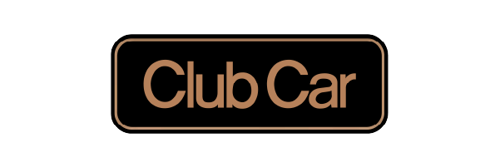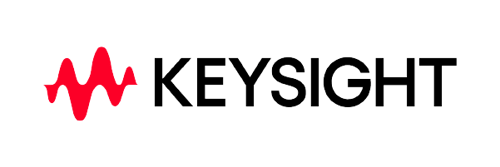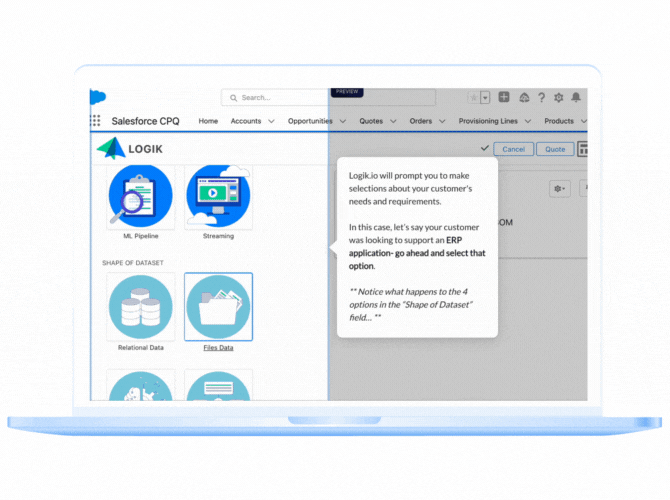Advanced Product Configurator for Salesforce CPQ & eCommerce
Use your own product rules, relationships and recommendations to get ahead of the pack when it comes to your Salesforce CPQ offerings



How can Logik.io Commerce Engine improve Salesforce CPQ?
Quote Line Limits?
Logik.io custom Bill of Materials object reduces quote lines needed for any configuration. Logik.io works right alongside your existing system so you can still leverage all your product data in one central place.
Performance Issues?
Logik.io’s intelligent solving engine was built to process rules and configurations with lightning speed, no matter how complex. Enable your sales reps to produce quotes faster for every product, for every customer, every time.
Complex Rules?
Logik.io’s is built with low-code and no-code admin features to handle any level of complexity, with lower admin effort. Allowing your business to maintain less and go to market faster by managing all products and data in one place.
Table of Contents
Section 1 Product Rules Salesforce CPQ
Product rules for Salesforce CPQ are the elements that make up the foundation for the entire system and help it perform the function for which it is made.
The point of the system is to help sellers customize their products to their users' specific, individual needs. This function can be used in three main ways.
B2C customers can allow their eCommerce shoppers to customize items to their personalities or needs. This often includes things like t-shirts, business cards, and furniture. B2B commerce allows for buyers to use a self-guided selling process via their website or discuss their needs with a sales rep who then handles the configuration process for them. This often includes business equipment and office furniture. It can also be used for manufacturers to produce exactly what their customers need easily.
Salesforce CPQ configuration rules are what guide sales reps and users throughout the configuration process. They do this by acting as a guide rail for the configuration. They dictate what options are available and what elements can be changed. In Salesforce CPQ, product features can only be customized based on the Salesforce CPQ configuration rules that you put into place beforehand.
Configuration rules in Salesforce CPQ guide users in a number of ways. For example, product selection rules in Salesforce CPQ allow you to choose which options to add, remove, hide, enable, or disable. You can choose to add an option that is mandatory and can't be removed, hide options you don't want users to see, choose which options they can add, and what options are off-limits.
Some companies have a lot of different products and features. They may be seasonal, become obsolete, or go out of production and new items might be added frequently. In this case, it can often be difficult to remove a specific product or feature from every configuration rule that includes it. Luckily, there's a function for this. Dynamic bundles in Salesforce CPQ allow you to bundle products or features by their type.
The most universal example is a fast-food restaurant. A chain may have many different meals available. Often, they let you choose the main dish, the side, and the drink from many options. If they stop selling one side and add others, it would be a hassle to change all the product rules to reflect the new set of options. Instead, you can allow any option listed as a side, and choices can be added and removed from the overall category.
Section 2 Salesforce CPQ Product Rules Examples
Salesforce CPQ product configuration requires that different parts work together.
As demonstrated above, one of the best ways to facilitate a complete understanding of the different terms and how they come together to create a Salesforce CPQ product configuration is to use specific examples.
Salesforce CPQ product rules examples can focus on the different elements to varying degrees. However, for many, it's beneficial to begin with a focus on a specific rule type first and then get more granular about the details that it encompasses as you go, so that's what we'll do. Let's use an example of a Salesforce CPQ product selection rule.
A Salesforce CPQ product selection rule lets you control which options or combinations are mandatory, allowed, hidden, or disabled. Selling smartphones is a good Salesforce CPQ product selection rule example due to the components and constraints involved. If you're selling smartphones, product selection rules can go a long way toward ensuring the customer gets the right set of items.
If they pick a specific model, you might make the compatible charger a mandatory selection. Then you can display only phone cases that will fit the chosen model while all others may be hidden. The different Salesforce CPQ product rule fields contain the specific information like the rule type, scope, error condition, and operator.
Section 3 Product Rules in Salesforce CPQ Trailhead
In order to learn Salesforce CPQ and use it properly, there are things you need to know.
To help easily familiarize users with the different terminology and configuration attributes, Salesforce CPQ trailhead programs, courses, and certifications walk you through the process. To make sure that you understand complex topics like product rules in Salesforce CPQ, trailhead programs will walk you through them.
Trailhead can assist with the Salesforce CPQ product setup process to help you create the configuration logic that works for your needs. Again, it's best to start broad and then narrow the focus, so many trailhead courses will start with something like Salesforce CPQ product selection rules. Then they'll get more granular using Salesforce CPQ product rules examples. This might entail explaining how the Salesforce CPQ hide product options function works.
They could then provide a specific example like we did above. They would go even further by showing different fields and explaining that the Salesforce CPQ error condition tested object would be the one that requires something specific to be true. For example, the above scenario's error condition in Salesforce CPQ would include selecting a charger not compatible with the phone. This level of detail is what makes trailhead so useful.
Section 4 Product Rule Fields Salesforce CPQ
Everything in a configuration is controlled by the different product rule fields in Salesforce CPQ.
For a product rule in Salesforce CPQ to be successful, you must have the correct information in each of the various product fields. Having the correct Salesforce CPQ product rule configuration attribute in each of the product fields will allow the configuration logic to function properly and have the intended effect.
For example, a dynamic bundle like the fast-food bundle mentioned above would contain a filter product rule for Salesforce CPQ to correctly filter the options available to the consumer. In order to do this, several product rule fields in Salesforce CPQ must be filled in correctly. Some of these include the name of the product rule, its scope, and the condition(s) met.
No matter what rule type you're applying, every product rule must specify a configuration rule, an error condition, and an action. The configuration rule is what connects the product rule and the products or bundles to which they should apply. This tells the system which products and bundles this rule should be allowed to alter.
An error condition must specify what element should be tested and by what criteria. The Salesforce CPQ error condition fields must contain the correct attributes to have the desired effect. This can be a complex process and the error condition fields may change based on what you're trying to accomplish. Then, the action is what should happen under these circumstances. It's the thing you want the system to do to the product to configure it.
All of this is very complex and interwoven. That's what makes the Salesforce help pages and trailhead courses so helpful. They can take the time to discuss all the nuances involved and go over everything you need to know.
Section 5 Option Constraints in Salesforce CPQ
As amazing as the system is and as much as it is beloved by many of its users, there are still option constraints in Salesforce CPQ that you must consider.
The Salesforce CPQ product configurator by itself is only able to do so much. It was created for simple configurations and options and that is what it excels at. However, many of the Salesforce CPQ limitations begin to present themselves when you try to enable much more sophisticated configuration logic.
While sources like trailhead and twin fields in Salesforce CPQ contain the requisite Salesforce CPQ documentation to explain how to use the right option selection method for CPQ success, how to use configuration attributes in Salesforce CPQ, and the core importance of Salesforce CPQ product actions, the same documentation expressly admits these limitations.
That's why it can be so helpful to add Logik for Salesforce CPQ to supercharge your Salesforce capabilities without having to leave the platform. You get the benefits of both the Salesforce CPQ functions and the powerful headless configuration engine of Logik.io. This allows reps to easily customize products with fully optimized rules and attribute-based configurations. This leads to a smoother and better customer experience.
Section 5 Option Constraints in Salesforce CPQ
As amazing as the system is and as much as it is beloved by many of its users, there are still option constraints in Salesforce CPQ that you must consider.
The Salesforce CPQ product configurator by itself is only able to do so much. It was created for simple configurations and options and that is what it excels at. However, many of the Salesforce CPQ limitations begin to present themselves when you try to enable much more sophisticated configuration logic.
While sources like trailhead and twin fields in Salesforce CPQ contain the requisite Salesforce CPQ documentation to explain how to use the right option selection method for CPQ success, how to use configuration attributes in Salesforce CPQ, and the core importance of Salesforce CPQ product actions, the same documentation expressly admits these limitations.
That's why it can be so helpful to add Logik for Salesforce CPQ to supercharge your Salesforce capabilities without having to leave the platform. You get the benefits of both the Salesforce CPQ functions and the powerful headless configuration engine of Logik.io. This allows reps to easily customize products with fully optimized rules and attribute-based configurations. This leads to a smoother and better customer experience.
Section 6 Salesforce CPQ Tutorial
Salesforce CPQ tutorials are widely available. They can be found both within Salesforce CPQ Trailhead and outside of the site's own resources.
While many consider the Trailhead courses and tutorials to be the best way to learn Salesforce CPQ, there are plenty of Salesforce partners and unaffiliated experts that offer Salesforce CPQ training materials.
There's a wealth of easily available Salesforce CPQ training online today. They offer all different types of training from simple Salesforce CPQ tutorial PDFs that you can browse on your own to full courses you can take. The more comprehensive courses cover a variety of topics and specific sections of the Salesforce CPQ process.
There are also print and video courses as well as mixed medium options to help you learn in whatever way works best for you. There are even consultants who will work with you personally to help you learn the system or to act as your business's Salesforce CPQ Admin.
These resources can help you learn the ropes, train your team, onboard new employees, and periodically brush up on the system to sharpen your skills. There are even Salesforce CPQ certification programs to provide you with high-level expertise and give you the credentials to prove your skills. Alternatively, you can hire someone who already has a Salesforce CPQ certification.

SHARE